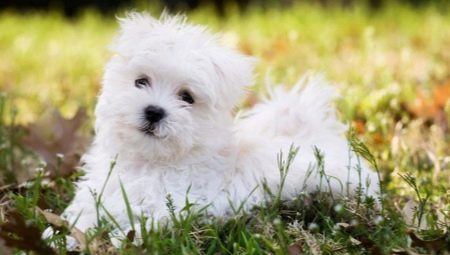Ladies of past centuries carried dogs with them, not only because they were very beautiful, but also to show their worth, because such a pet was worth a fortune. Today, girls can often be seen with dogs of various breeds, but it is the Maltese lapdog or maltese who can turn an ordinary girl into an exquisite lady. This is also a gorgeous gift for her beloved, capable of breaking through a dam with stocks of endless tenderness. Although today such dogs are not the most expensive breed, yet this is clearly not the cheapest dog.


Origin history
The Maltese lapdog or pygmy bichon is rightfully considered one of the oldest breeds of dogs. Images of tetrapods of this species are found even in ancient Greek sources, and today scientists have come to the conclusion that even in those days, these cute dogs were favorites of Hellenic nobility.
Legend has it that for the first time to breed fluffy handsome men began on the island of Malta, whence came the modern name - "Maltese" from Italian can be translated as "Maltese" or "Maltese". Be that as it may, modern science claims that the Maltese lapdog does not owe its origin to either Malta, or Bologna, or to any other places in Europe. The most common versions say that for the first time such a dog was bred in ancient China, although there is a more exotic theory of origin associated with the Philippines.In any case, the animal’s homeland is East or Southeast Asia, and from there the lapdogs could get to Malta with numerous transfers, which became the springboard for the conquest of Europe.
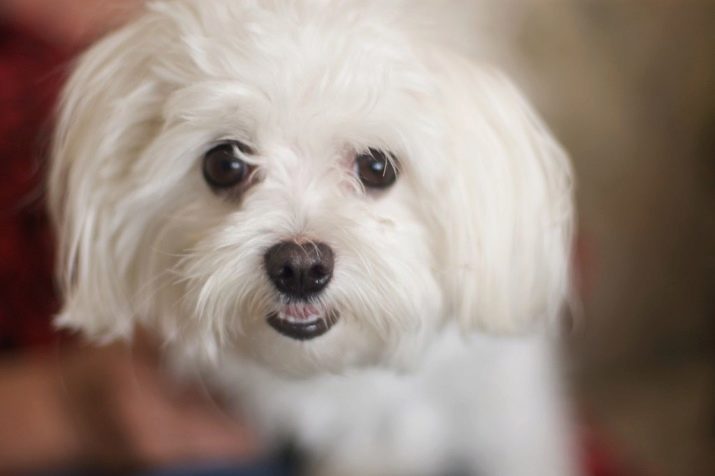
There is another, relatively unpopular theory about where Maltese came from. According to her, there are sources claiming that at the turn of our era on the island of Meleda near modern Croatia there were dogs that were distinguished by unusual beauty. Malta at that time was called exactly the same or very similar, and in the 16th century, with the growth of the popularity of this breed in neighboring Italy for both regions, the names were simply confused. It is assumed that the small size of the toy poodle and spaniel could be directly related to the emergence of a new breed.
In ancient times, a small dog was appreciated not only for its attractive appearance, but also for practicality. - at first it could be used to effectively fight rodents that plagued Europe. Over time, the representatives of the breed thanks to the work of breeders noticeably prettier and turned into a typical companion - in fact, a beautiful toy for rich people. Already in the Renaissance, many prominent artists of those times depicted the Maltese lapdogs on their masterpieces. So, you can see this little dog in the paintings of such recognized masters of painting as Rubens, Goya or Landsir.
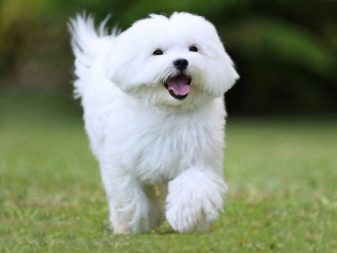
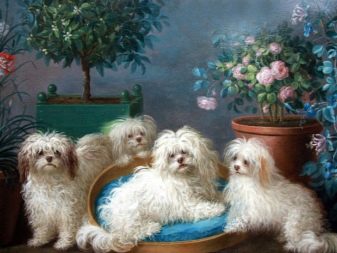
Description
When purchasing dogs of expensive breeds, one must first inquire about the characteristics of the variety of interest. Such a requirement is immediately caused by two significant reasons: firstly, only in this way you can decide what you really want, and secondly, this is the only way to clearly understand if the seller is trying to deceive a gullible buyer by selling him something cheaper. Considering that even such dogs are not so rarely bought from hand, the second argument should seem especially convincing to potential owners of the little dog, so we’ll try to get acquainted with all the features of Maltese lapdogs.
If we talk about the positive aspects of the representatives of this breed in a nutshell, it turns out that the Maltese are one of the cutest dogs on a global scale, and this applies equally to both the appearance and behavior. Maltese - dogs are non-conflict, they agree to be friends with young children and other pets. It is not difficult to feed such a baby, because he eats very little, with careful grooming, he does not have a molt, and his pet’s temper is very quiet - he barks extremely rarely.

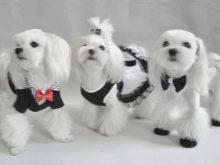
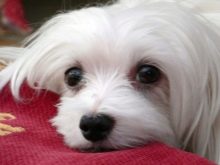
At the same time, it is probably impossible to find such a pet, which would not have observed at least some flaws. For example, the beauty of maltese requires sacrifice in the form of regular cleaning of the ward’s hair, since in the neglected form the little dog will not look beautiful or at its own cost. Another important point is the dog’s emotionality: he tends to be offended by the manifestations of aggression from the side of his beloved master, his frustration is clearly visible and sometimes even tears, because of which, after just punishment, you can also feel guilty about yourself. Finally, representatives of this breed are categorically contraindicated to eat everything, they are strictly forbidden to give food from the human table, since the digestive system is quite weak and often simply does not accept unfamiliar foods.
All these disadvantages, of course, are surmountable, but can be a cause of great disappointment if you acquired a puppy without knowing them in advance.
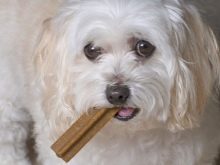


Character
By acquiring a creature with such a cute appearance, the future owners probably expect that his temper will be appropriate. Of course, this is true, otherwise a cute dog would hardly have been associated with beautiful ladies for centuries. In short, the habits of maltese can be described as follows - this dog is very aristocratic and restrained, she is kind and loves the owner's affection. Interestingly, such a small creature has another useful characteristic characteristic of any “normal” dog - it is ready to get into a fight of any scale, if only to protect its owner.
The animal is not afraid of opponents, even if they are much larger than it, and is aggressive towards them if they try to offend their beloved owner.
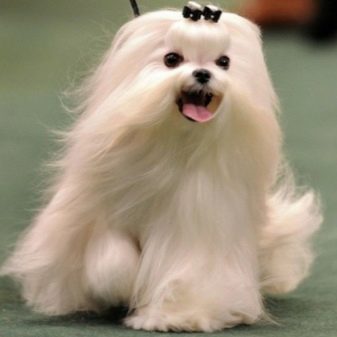
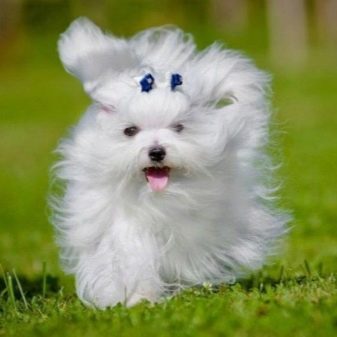
Representatives of the breed have a lively character - they can not be called completely uncontrollable, but they love to frolic, especially if there is enough space for this and lush green grass under its paws. At the same time, the dog loves the company of people - he communicates with pleasure not only with the owner, but also with strangers, provided that the owner himself gives them some signs of attention. The dog feels when the owner is not in the best mood, and does everything possible so that he does not remain alone, but in such a situation he no longer demonstrates excessive cheerfulness.
Specialists tend to attribute the skills of a good psychologist to a Maltese pet.


Such a favorite is very suitable for those people who are rarely on long trips and are ready to devote a lot of time to doggie. The fact is that it’s great to get attached to such a baby, and he, most importantly, is also attached in return. Maltese is bored when the owner is not nearby, and although there is no need for a constant presence, it is better not to leave him alone for a long time.
As already mentioned, the Maltese are not against acquaintances, but the candidate must meet the fundamental requirement - he should not come from a threat to the four-legged himself, or to his masters. Otherwise, a sweet and friendly creature will turn on the aggression mode, and although this is not a pit bull that would make the insolent regret his mistake, Maltese will not allow a potential enemy to approach him.
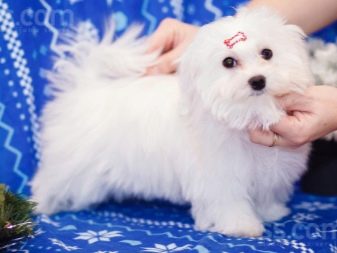

Maltese lapdogs are normally compatible with children - the little dog is not aggressive and treats most of children’s leprosy normally, realizing that they are not done from evil. A cute little ball of life is happy to make contact with children, however, preliminary detailed preventive conversation is necessary with the kids. Its meaning will be that animals cannot be tortured, and in the case of maltese, this statement is especially true in connection with the tiny size of the pet - even due to inaccuracy, it can cause serious injuries.
If, in principle, you can consider yourself a pet lover, the question arises of how the lapdog gets along with them. As a rule, there are no problems with this, at least not from the Maltese. Representatives of the breed do not believe that they have something to share with any other dogs - in the absence of aggression against them, the Maltese will never provoke a quarrel first. The aristocracy in relation to this dog to other representatives of the fauna applies to almost any pets - even with cats there should be no problem.
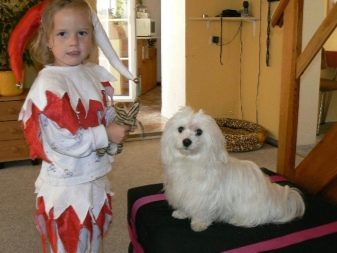
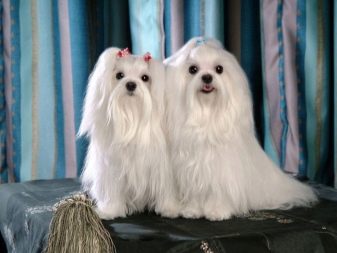
To rely on the fact that the tiny handsome man will also be a trained circus animal is not worth much - the Maltese lapdogs are not one of the most easily trained dogs. The reason is largely connected with the small size of the dog - it is obvious that the level of its mental development is somewhat behind the average dog.
If the owner nevertheless set out to teach his pet various tricks at all costs, you will have to thoroughly be patient. As a rule, a cute dog remembers one gesture command only after dozens of repetitions.

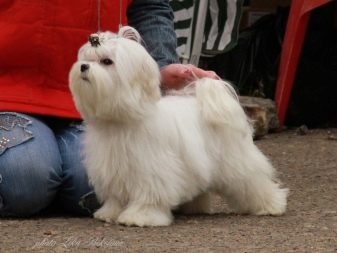
Appearance
According to the generally accepted classification of canine breeds, maltese belong to group 9, which includes companions and indoor decorative dogs, and in it to section 1, devoted to lapdogs and dogs similar to them.The standard assumes that the weight of an adult varies from 3 to 4 kilograms, regardless of gender, although the males are still a little taller - 21–25 centimeters at the withers versus 20–23 centimeters at bitches. Such pets live most often from 13 to 16 years.
Best of all, such a mini-lapdog can be described with the phrase “white and fluffy”. The pet’s coat is notable for its high density and considerable length; it, as it were, hugs the animal and forms a kind of “mantle”.
The coat of the dog is characterized by a pleasant silkiness, due to which the cute fluffy wants to be ironed even more.
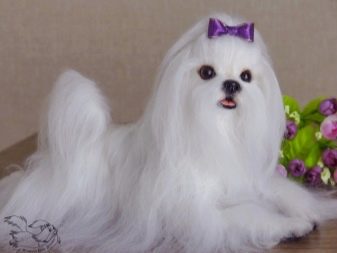
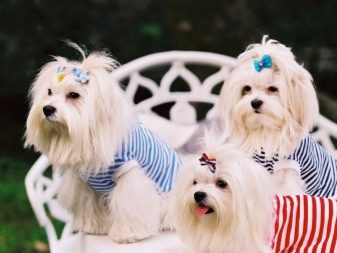
The head of the dog looks quite large, its width is about half the height of the entire dog at the withers. She rests on an elongated straight neck, which gives the pet a special aristocracy in appearance. The eyes on the muzzle are located in front, they have a rounded shape and differ in clever expression. The color of the iris is close to dark chocolate. The head is complemented by triangular ears hanging down along the head and a large black nose.
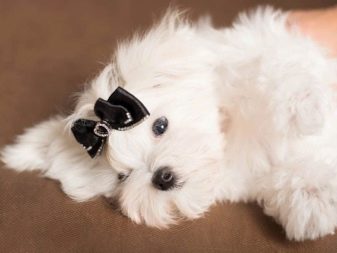
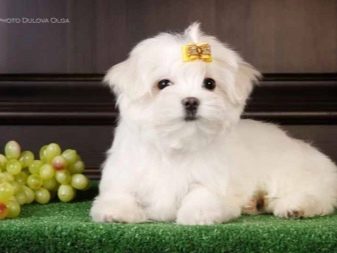
In determining purebred maltese, special attention should be paid to the shade of the coat - according to the standard, it should be white and no other, the only relatively acceptable exception is the color, which is commonly called ivory. For such dogs, a reddish or any other colored color is possible, but such a characteristic will be considered a drawback, and such an individual is no longer suitable for breeding.
There are no such strict requirements to the length of the coat, and therefore even two varieties of the Maltese lap-dog are distinguished - American and English. The first option is different in that his coat does not grow too long, due to which the proportions change somewhat. So, the head of this dog seems somewhat smaller than that of his English counterpart.
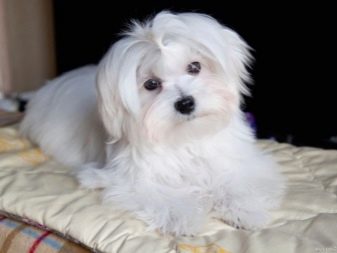
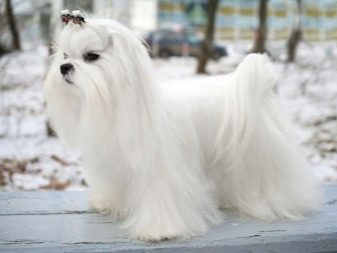
How to choose a puppy?
If you have never before had the experience of choosing Maltese lapdogs, making a mistake will be easy. In this situation, it is often advised to ask for help from a third-party expert, but in our conditions we understand that it is possible to cheat or promote certain nurseries and breeders here not according to objective estimates, but according to connections. For this reason, you should have at least minimal knowledge about how to choose the right baby.
First of all, the best age for weaning a puppy is two months - at this time, the Maltese is already becoming relatively independent, but can still easily get used to the new owner. At the same time, such a young individual is still covered with children's hair, which is difficult to evaluate in terms of health status or breed correspondence. All that can be said is that excessive fluffiness or cottoniness should not be inherent in the cover, there should not be clearly noticeable curls, but slight waviness is allowed.
Already at this stage, the puppy's coat should be silky to the touch, but its length should not be excessive - this suggests that the baby is older than the age that is attributed to him.
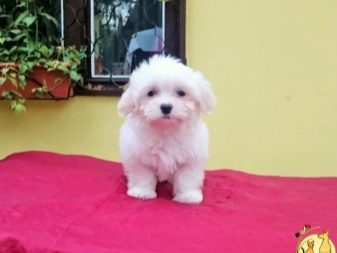

Cleanliness and a pleasant smell are artificial criteria, but even if this is not the case, taking a pet is not worth it. Bald patches on the coat, redness or a skin rash, traces of secretions near the eyes or ears, lethargy and passivity are all signs of a sick dog, which the owner will have to treat. Be sure to check the bite - it should be scissor-like. Excessive shyness or aggression may indicate that the animal was offended, this will affect his psyche for life. The proportions of body parts should now be the same as in an adult dog.
Decide for what purpose you need an animal - whether it will be your home joy or if you plan to ride it at exhibitions. Pets of the so-called pet class are also suitable for home breeding - they have some features, because of which they will not be allowed to the exhibition, so they are cheaper. At the same time, the layman will not even notice the difference, because the reason may turn out to be insignificant - say, the weight is less than the standard. If you buy a dog for exhibitions, do not forget that its condition depends on the correctness of care, therefore the task of the owner is not limited to buying the best puppy.
Raising a champion dog is hard work requiring substantial cash injections.

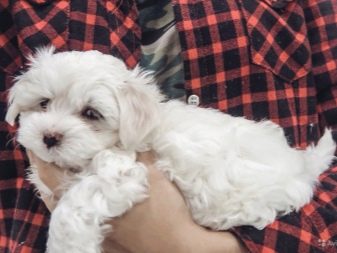
Feeding
Determining what and how to feed the Maltese lapdog, many owners make so many stupid mistakes that recommendations on choosing a diet should start from the opposite - briefly going over the points of what you definitely do not need to do.
- Do not overfeed. Maltese is a dog so small that absolutely anyone can give it too much food, because it is hard to believe that a living and so active creature, even a very small one, has enough of the meager food that he eats. Do not forget that a significant part of the dog’s visual volume is its lush hair, which means it is even smaller than it seems. The pet will not refuse excess food if you offer one, and this is precisely the problem - with regular overeating, the Maltese easily eats up and becomes oily, which results in problems not only with digestion, but also with vessels and joints. This breed is loved for activity and playfulness, but you risk raising a lazy and painful mattress.
- Do not share food with your pet. This rule applies not only to Maltese lapdogs, and even not only dogs - it is relevant for almost all types of domestic animals. The fact that a person seems useful and perceived by his body without any significant consequences can cause very noticeable harm to the little dog. The most common abuse in this regard is treating maltese with sweets - they are completely useless in his diet. Again, all these extra snacks in the case of a tiny pet that needs to eat very little, once again contribute to obesity and health problems.
- Do not focus only on your tastes - Pay attention to the reaction of the Maltese. In order for an adult to always remain cheerful and cheerful, nothing needs to overshadow her existence, and food, first of all. The peculiarity of the representatives of this breed is that they are quite picky in terms of food choice - some prefer to eat only dry food, others like a diet based on natural products, others need a periodic menu change. Specifically, a taken dog may not like the type of meat or canned food that is liked by all other Maltese lapdogs. In most cases, the most reasonable tactic for the owner will choose exactly what the fluffy baby likes, however, you need to insist on including useful components in the diet.

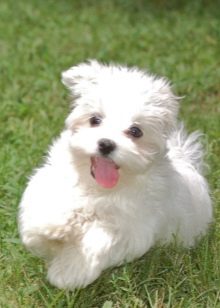
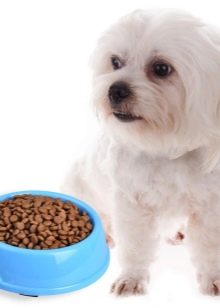
If you decide to feed the animal mainly with dry food, give preference to those that belong to the premium class and are designed specifically for dogs of small breeds. The natural nutrition of an adult revolves around such essential ingredients as boiled chicken or beef, cottage cheese and low fat kefir. For variety and greater benefit of the diet, such additional dishes as fish, finely chopped green apples, chicken eggs and boiled buckwheat or rice can be periodically included in it.
The presence of any errors in the preparation of the daily menu will quickly become apparent - if the food is selected incorrectly, the maltese wool will quickly lose its original appearance. Symptoms such as dullness and brittleness of the coat, as well as dandruff, directly indicate that the animal’s diet is not balanced.
The first mandatory step in this situation is to try to make changes to the dog’s diet, but if even this does not help, you should contact your veterinarian.
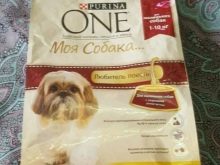
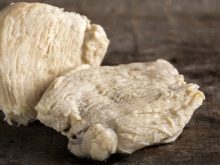

Care
If you already chose the Maltese lap-dog as your pet, get ready for the fact that you will need to devote a significant part of your time to caring for it. One way or another, now your life will revolve around a tiny Maltese.
First you need to clarify that the content of a dog of this breed is possible in an apartment and only in it. There are two main reasons: firstly, a small pet is not a serious opponent even for a daring street cat, and secondly, in a street, the pet will have problems with hair. The fact is that the latter is deprived of undercoat and therefore practically does not warm its owner, and even on the street a beautiful dog will quickly turn into a dirty and unpleasant ragged man. Owners of private houses sometimes let their wards take a short walk in the garden, but then you need to follow it or in any other way to have one hundred percent certainty that the animal will not run away and will not meet with a serious opponent.
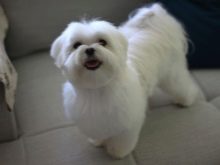
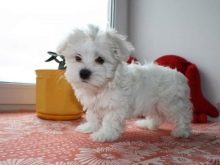

When purchasing a Maltese lap-dog, you should immediately think about buying a number of necessary accessories.
- Sleeping place and "dining room". These accessories are needed for absolutely any pet living at home. The kid should know where to sleep - for this, buy a cozy house or a special bed, although you can independently construct a soft and warm place from an old blanket.
Dishes should be chosen small, but such that it does not tip over.
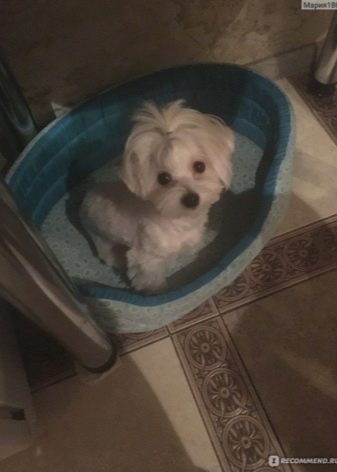
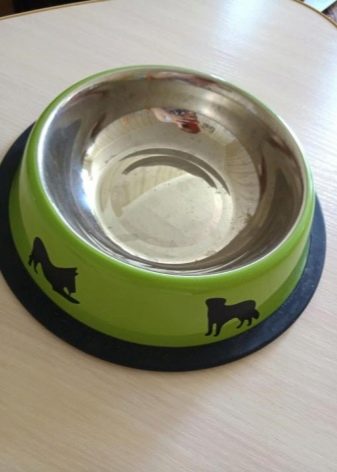
- Toys Maltese are very fond of playing with tweeters, especially those who are interesting to them in puppyhood. The owner will have to decide what he wants - to please the pet as much as possible or listen to the squeak constantly.

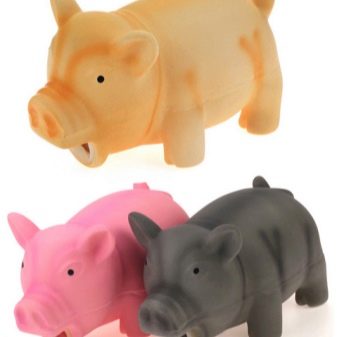
- Collar with a tag. In our days, Maltese is often used as a companion - they take it with them for walks and shopping, and although you can’t call it a full-fledged dog walking, it’s also a walk. In the process, the young pet may run away or get lost, so the own contacts are indicated on the tag so that the finder has the opportunity to return the fugitive.
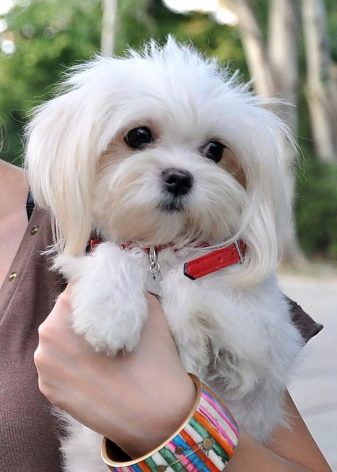
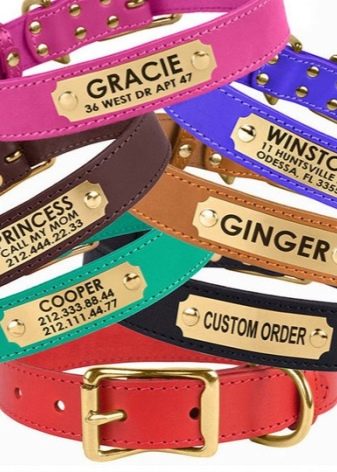
- Grooming accessories. The hair of a lap-dog requires constant and thorough care, so the owner will inevitably need combs (both thick and rarer) and a hair brush. Separately, you should purchase a claw cutter.
Full-fledged care for the baby also involves the purchase of special cosmetics that help simplify the combing of long-haired animals.
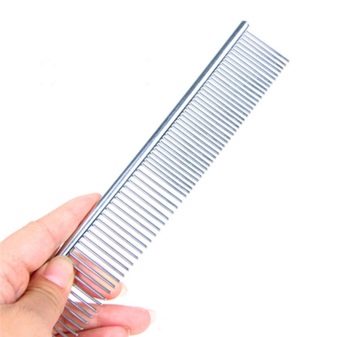
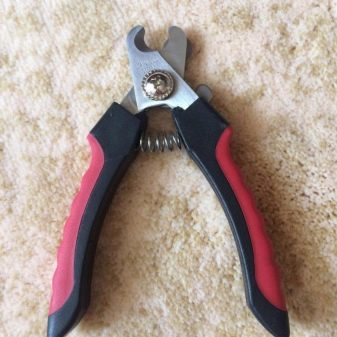
- Tray and a set of disposable diapers. Young Maltese is considered a model of a cute appearance and the same external habits, therefore, until he is accustomed to the toilet, he is often dressed in special “clothing” that helps the baby not to be associated with lack of culture.
Among other things, for walking along the street in the cool season, the pet will not be disturbed by full-fledged clothing that provides a good warming effect. Without undercoat, he will surely be cold, so from September to October, be prepared not to go outside with a naked doggie.
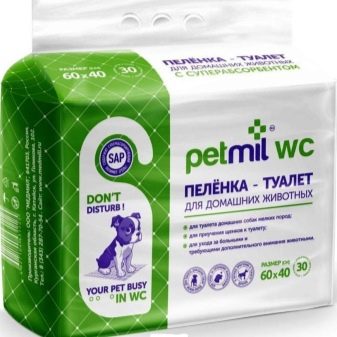

Except for rather troublesome procedures with hair, otherwise it is no harder to look after a Maltese than most dogs of other breeds. A set of human responsibilities is as follows.
- Inspect your eyes and ears daily. From time to time, dirt that enters there is removed with a cotton pad so that it does not become a medium for the propagation of pathogenic microorganisms. Watery, reddened, or irritated eyes are a clear reason to seek veterinary care.
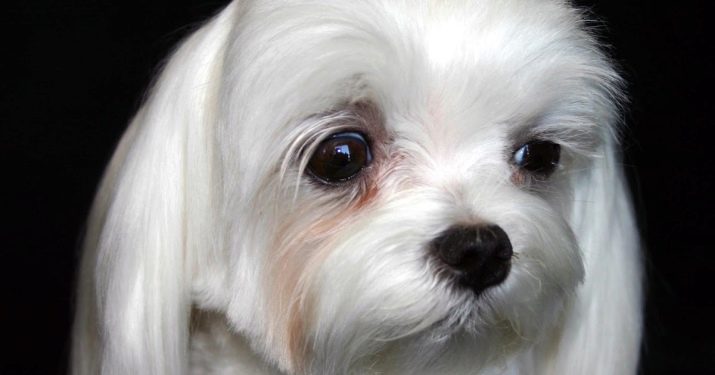
- Cut nails - every two to three weeks. Many owners of Maltese lapdogs not only dress, but also shoe their pets. For claws, this is not very good, since they generally cease to wear out naturally, which means that the procedure will have to be carried out even more often.
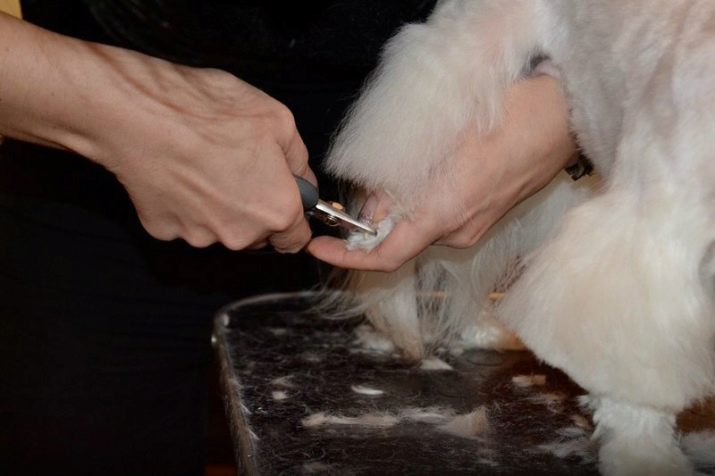
- Take preventive measures against fleas, ticks and worms - once every 4-6 months. This procedure is important both for the daily health of the Maltese, and for the successful full-fledged mating or grafting - before them the glazing is carried out necessarily.

- Get vaccinated as needed. The baby is vaccinated for the first time in puppyhood - already in two months. The procedure is repeated after only a month, then the vaccine is done at the age of one year. An adult pet needs annual vaccination.


- Combing the hair daily. This is the most difficult and time-consuming obligation, which cannot be avoided if the owners want the Maltese lap dog to remain a truly elite dog.
It is important to ensure that long strands do not get tangled up, and dirt does not accumulate in them.
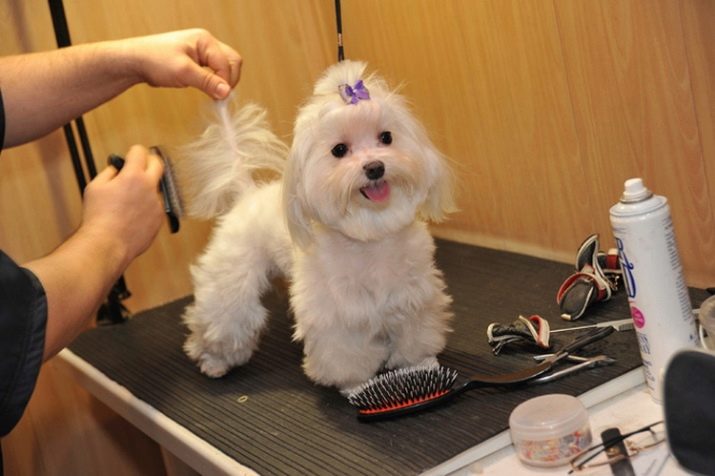
- Bathing - no more than once a week. The color of the coat of representatives of this breed is such that any pollution is clearly visible on it, however, water procedures on a daily basis will become too much - instead, it is more reasonable to use a combination of clothes, shoes and a towel with a comb. When bathing a dog, remember that ordinary shampoos are not very good - from their use, the shade of the coat turns yellow. It is best to use special whitening shampoos for dogs of long-haired breeds.
It is important to dry the wet pet with a towel and then a hairdryer, otherwise it may catch a cold on the first draft.

- Cut - as desired. If you plan to take part in various exhibitions with your pet, remember that there the rules themselves do not imply any haircuts. The maximum that is allowed is the minimum trimming of the hair at the tips, on the legs and around the eyes. At home, lapdogs are often cut short for the summer to solve the heat problem and once again reduce the likelihood of a pet getting dirty, and in winter the Maltese, on the contrary, grows over so as not to freeze.
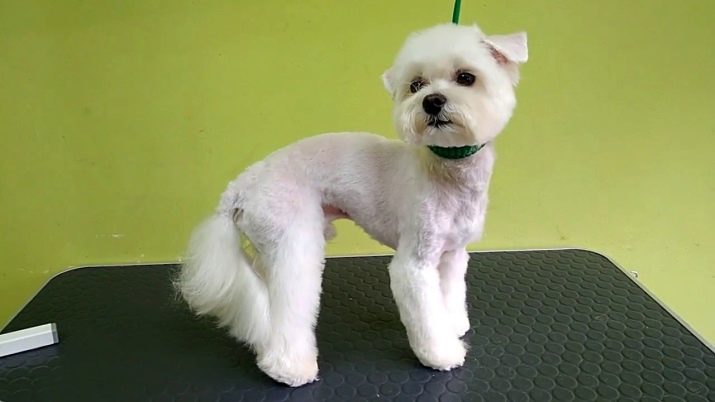
Parenting and training
If you expect that you can make a full-fledged service dog out of maltese, then you are a big optimist, because training of representatives of this breed is difficult. In this case, the minimum education in any case is necessary for the beast, and it is advised to start immediately, as soon as it is purchased. By two or three months, the puppy is already able to respond in its own name and carry out the simplest commands.
Cute dog’s memory is not too good, therefore, it is important not only to be patient, but also to ensure that the rules are followed strictly and without exception. What is forbidden to the baby once, it should always be forbidden by all households who tolerate slack - he will be guilty of poor education of the four-legged child.
At the same time, it is highly desirable to place the main emphasis on the stickless carrot method, because the Maltese are very touchy and immediately lose interest in learning. Try to make learning strongly resemble an interesting game.
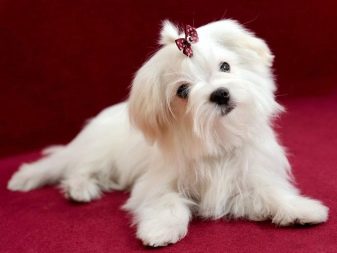
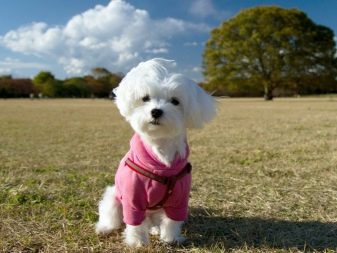
Do not demand circus tricks from your pet, but without fail learn the basic commands. These usually include six teams: “no”, “fu”, “near”, “place”, “to me” and “sit”. For some reason, it is widely believed that training dogs of small breeds is not necessary, this is largely due to the fact that they do not lend themselves very well to her, but training, of course, is necessary for them. The owner is interested in this, not only because he needs a well-trained dog, but also because of the safety of the animal, because the executed voice command during a walk can prevent the animal from escaping, falling under the car or eating something completely unnecessary. Therefore, it is advisable to train the little dog so diligently that she follows all the orders implicitly and instantly.
Although the Maltese are often credited with the ability to get along well with other people and animals, such a property cannot be inherent in them a priori - if the baby has never seen his kind, his reaction to them at the first meeting can be most unpredictable. The same applies to any other meetings - for a puppy-homebody it can be a real discovery that, besides the owners, there are other people. For this reason, young Maltese, already trained in basic teams, begin to walk in places where many people and other dogs are a process of socialization, that is, involvement in society.
An unusual move in the process of socialization will be to turn to a professional trainer - even if you want to teach a pet everything on your own, a couple of lessons from a specialist will not be superfluous, including for you.
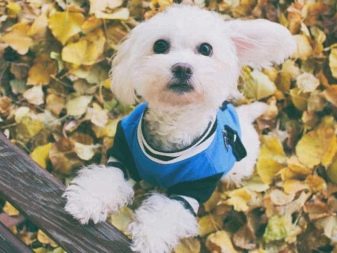
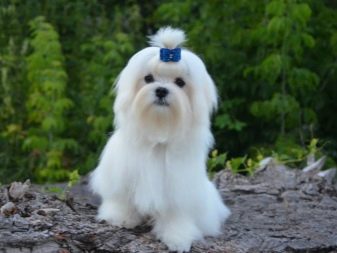
Breeding
Those buyers who start Maltese in order to become breeders in the future should pay special attention to females - there are traditionally more males, so there is less demand for them. The first estrus in females begins approximately in 6–12 months, but nobody sends them to the mating so early - the young female organism simply will not stretch the pregnancy, and the babies will be born weak and unhealthy. For this reason, with reproduction they usually wait until the third estrus.
During estrus, the bitch shows an increased interest in males on the street, so it is worth watching her if you do not need posterity yet. According to the rules of the Russian Cynological Federation, the first mating for a female is allowed no earlier than the age of 1 year and 3 months.
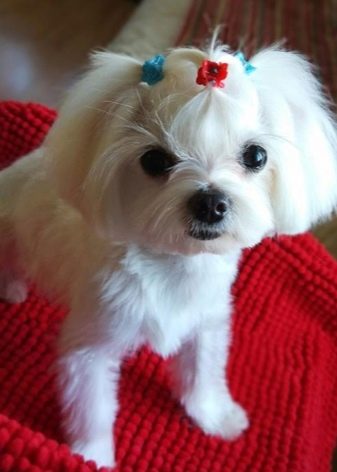
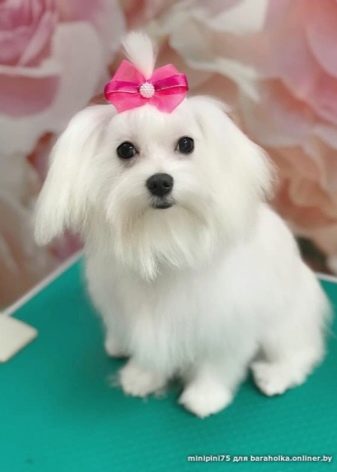
Remember that pregnancy and childbirth deplete the body of the animal, therefore it is impossible to use each estrus as a reason for pregnancy. With the regularity of leaks every six months, the norm is considered to be knitting every other time, as an exception, you can skip only every third estrus, but this is only if pregnancy and childbirth pass without the slightest complications. If the pet’s estrus only happens once a year, then the time between two such periods is enough for the dog to recover - accordingly, you can use every opportunity.
A successful mating result is usually achieved only if the bitch is brought to the dog, and not vice versa. This is because the male Maltese feels awkward in an unfamiliar environment and does not show the proper activity that the arriving female expects from him.
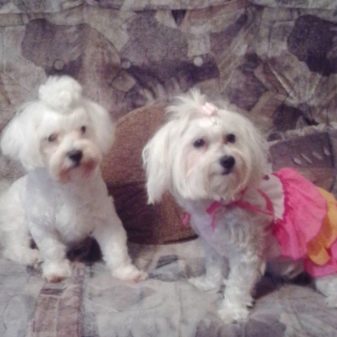

The average duration of pregnancy in representatives of this breed is 63 days from the moment of mating. Maltese women in the process of childbirth sometimes need help from a person, so you need to either prepare for this morally and theoretically, or carefully monitor the signs of the imminent birth of babies and look for opportunities to invite a more experienced person. The easiest way to determine the approach of a miracle is the changed behavior of the dog - she feels that she will soon have cubs and begins to equip a nest for them.
Be prepared for the fact that the birth of a lap-dog has a significant duration - they can easily drag on for 6-12 hours. In fact, the beginning of the process is considered the moment when the bitch begins to show obvious anxiety and increased attention to her own crotch. Puppies are born one at a time with an interval of about 15-30 minutes.
If you suspect that the process is not normal, you should immediately call a veterinarian or take the dog to the clinic. The birth of the Maltese lapdogs is usually not accompanied by complications, but the owner must be prepared for unforeseen situations, so you should stock up at least the specialist’s phone number.
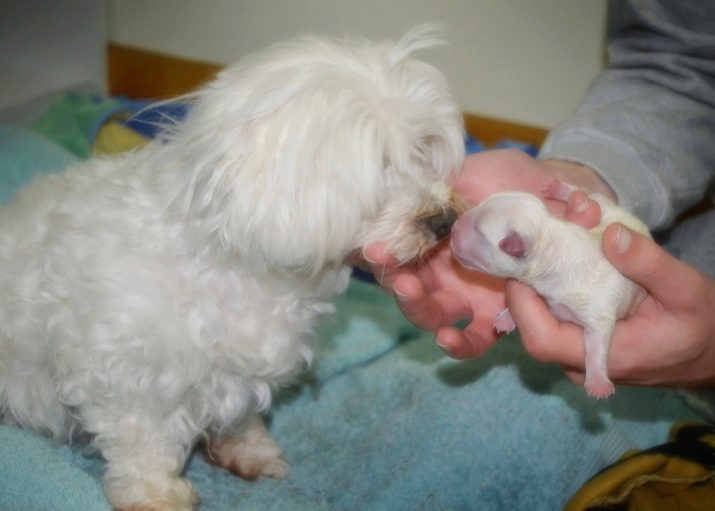
Reviews
The owners overwhelmingly leave extremely positive reviews about their own Maltese, which is not too surprising - it is not in vain that such a little dog costs a lot of money.It is noted that the dog of this breed is active and playful, but at the same time affectionate and friendly to everyone he knows well. A curious comment was made by a woman who had a child a couple of years after the establishment of the dog - she was afraid that the pet would be jealous of the owners for the new object of adoration, but fears were unjustified.
They also write that even those who do not believe in the possibility of training their pet need not give up. An example is given of smart individuals of the Maltese lapdogs who quickly learned to use the tray, and some even knew how to dance on their hind legs, which in the performance of such a beautiful creature looks simply bewitching. At the same time, really smart dogs are a little more endowed with feelings and their own psyche, therefore they are advised to pay more attention to them. This is justified from a logical point of view, because with a good memory, the beast remembers absolutely everything.
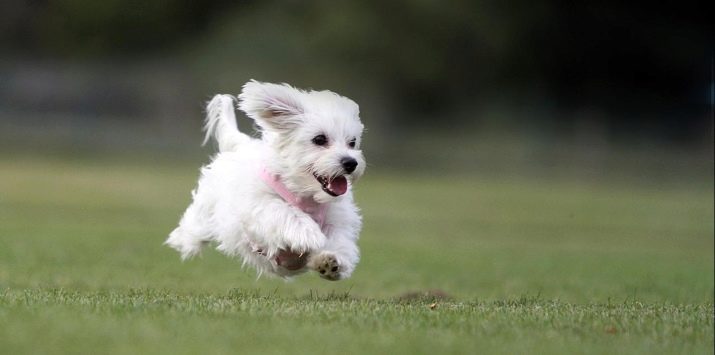


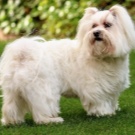
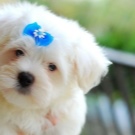
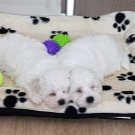
See more about the Maltese lap dog in the next video.
